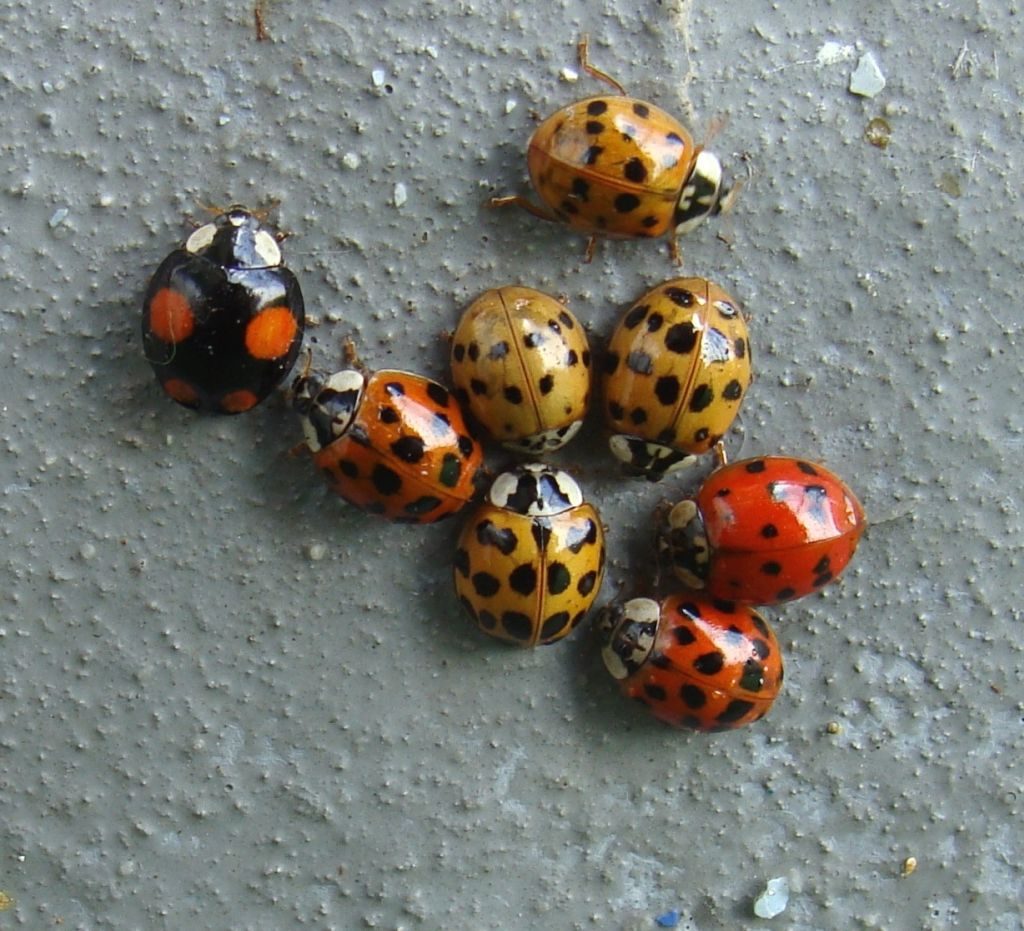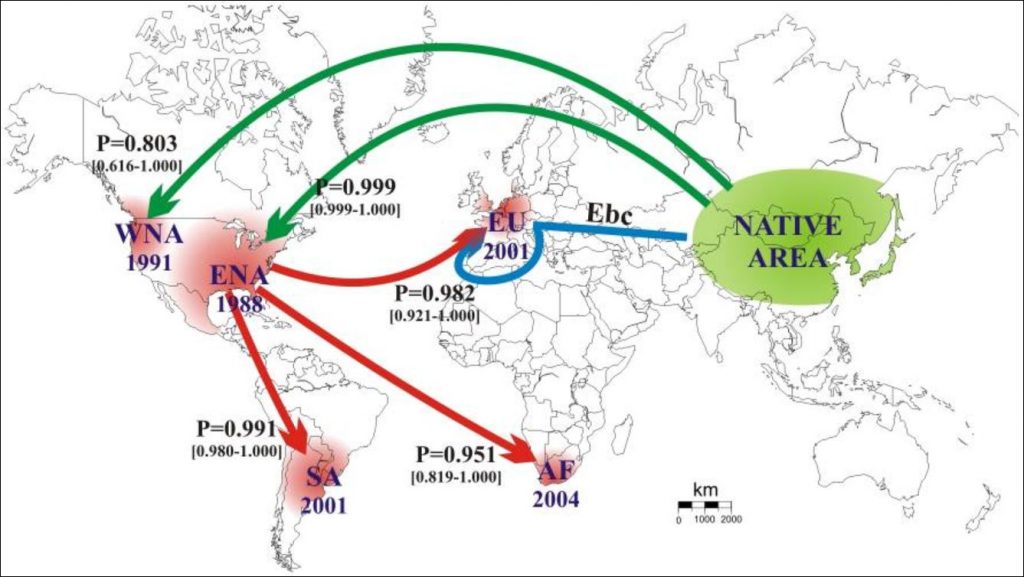
6 October 2019
Now that the weather has changed unwelcome insects will invade our homes including Asian ladybeetles (Harmonia axyridis) that resemble native ladybugs but don’t act like them. Also called “harlequin ladybirds,” they overwinter indoors, make a stink, and bite when frightened.
A hundred years ago we thought this bug was a great idea and repeatedly introduced it to the U.S. to control aphids. The introduced ladybeetles never made it in the wild until a population was found thriving near New Orleans in 1988. After that they spread like wildfire across the eastern U.S. and into Canada.
Thirteen years later they became established in South America and Europe(*). By 2004 they were in southern Africa. They hadn’t been introduced. How did they get there?
A 2010 study of their genetic markers revealed that those three continents were invaded by the eastern North America population. In a move called the bridgehead effect, Asian ladybeetles in the U.S. used our continent as a jumping off point to colonize Europe, South America and Africa.

The bridgehead effect is now recognized as a method of worldwide pest invasion. The pest establishes a bridgehead — a strong position near a human transportation hub — then fans out from there. Ants, obscure mealybugs and brown marmorated stinkbugs have spread this way.
Who will be the next pest to establish a bridgehead? I hope it won’t be the spotted lanternfly.
Read more at: Bridgehead Effect in the Worldwide Invasion of the Biocontrol Harlequin Ladybird.
(photo from Wikimedia Commons; map from PLOS One article posted at nih.gov. Click on the caption to see the original)
p.s. (*) The European population of H. axyridis is mixed. Some were directly introduced from their native range but were not considered pests until the North America cohort arrived.